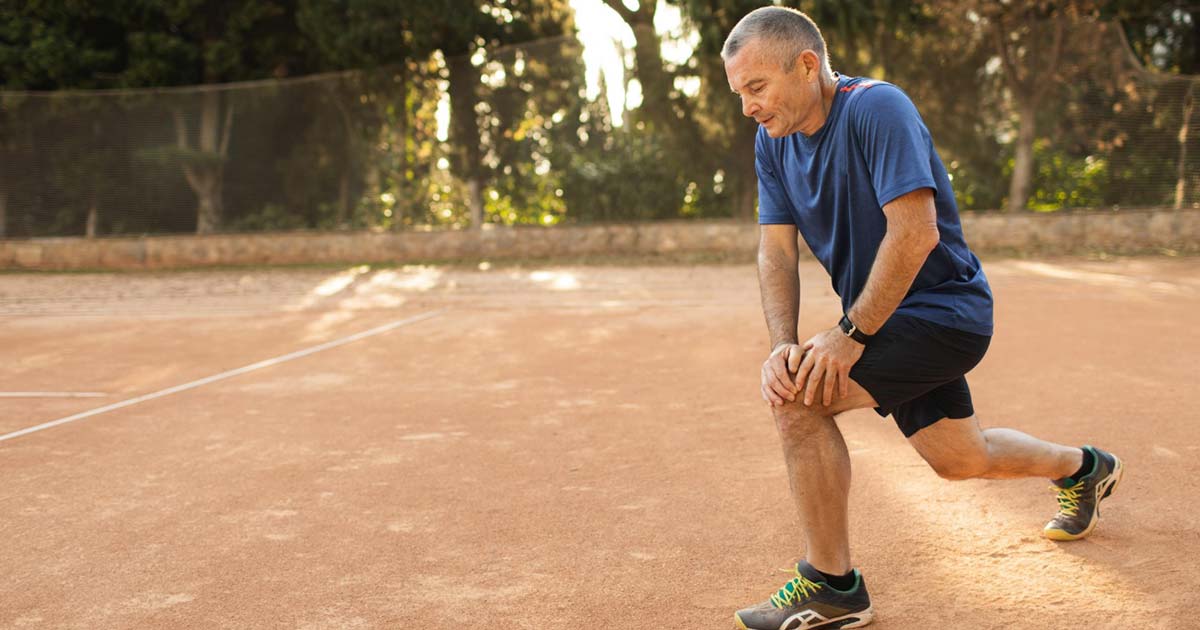Elliptical Benefits: Advice from an Exercise Physiologist
Advice to improve your movement, fitness, and overall health from the world's #1 in orthopedics.
Elliptical machines are a bit like the Swiss Army knives of the gym. The forward-and-back motion of their pedals simulates walking or jogging, while the up-down movement is akin to a stair climber. Meanwhile, the arm attachments provide the arms, chest and shoulders with a muscle-building workout.

“I like elliptical training because you can use it strictly for cardiovascular activity, for weight loss and conditioning the cardiovascular system, which improves overall health and longevity, but you can also use it for strengthening,” says Chelsea Long, MS, CSCS, TPI, an exercise physiologist at HSS. “It’s also ideal for people in physical rehabilitation and those who need to learn proper movement mechanics and control of their body.”
“You can't run seven days a week. You need to unload the muscles and the joints,” Long says. “The elliptical helps a lot for recovery days for high-intensity runners.”
Although elliptical machines are among the most versatile and easy-to-use pieces of exercise equipment in the gym, Long doesn’t recommend them for elderly people and those with balance issues. “I feel a stepper allows their workouts to be more controlled, with less of the side-to-side motion that occurs on an elliptical trainer,” she says.
Elliptical Versus Treadmill
For exercise physiologists like Long, the main advantage of elliptical training over other forms of high-intensity exercise, including running on the treadmill, is that it decreases “ground reaction force” on the body—another way of saying that the machine takes stress off the joints. “With the elliptical, you're eliminating the tension and pressure in the knees, hips and back that you would experience if you were running,” she says.
At the same time, elliptical workouts are considered weight-bearing, which means they help strengthen the skeletal system. “When you're standing on the elliptical, you're still supporting the weight of your body, unlike swimming or riding a bicycle, so the force of gravity is pushing back against you,” Long says.
Running on the treadmill still has its advantages, though. Because the elliptical machine does some of the work for you, as the pedals propel the body forward, “you’re still able to reach a high heart rate, but you don’t expend as many calories as you do when you’re running,” she adds.
Why Try Elliptical Training?
If you’re fit and don’t have problems with your knees or hips, Long recommends incorporating elliptical workouts into a well-balanced program that includes activities that are more weight-bearing, such as strength training, walking, jogging or running, to enhance your bone density.
“But if you have knee osteoarthritis or some hip discomfort, or if you have degenerative disc issues in your back,” the elliptical could be your primary form of cardio, she says, because “you’re getting the cardiovascular activity without impacting the joints.”
Of course, elliptical machines are expensive, with gym-quality models costing thousands of dollars. They also take up a lot of space in a room, so many people can’t buy one for home use. But if you are considering purchasing one of the devices, Long recommends looking for a machine that moves in a more forward-backward motion (the classic elliptical shape) rather than the up-and-down of a stair climber. She also prefers machines with arms that move, which help strengthen the upper body.
So how often should you use an elliptical? Your main goal should be to try to meet the national standards for cardiovascular activity: three 1-hour sessions of easy-to-moderate exercise, or 150 minutes of higher-intensity exercise, per week, Long says. Use that as a guide to determine how many elliptical workouts fit into your routine.
How to Use the Elliptical Properly
While elliptical workouts put less strain on the joints and spine, they can lead to certain musculoskeletal imbalances. “Because you’re not propelling yourself forward and the machine is doing that work, you can get into a rut of just going through the motions without actually using the quadriceps muscles of the thighs,” Long says. “That’s why it’s important to have good form. You want to push your legs down and back and then pull them up and forward, making a cyclical pattern like you would on a bicycle or when you're running.”
Also, just as you shouldn’t go from the couch to a full sprint, don’t crank up the resistance on an elliptical right out of the gate. “You really want to apply just enough resistance to where you feel like it's challenging, but you can maintain your control and technique,” she adds. “Once you start flailing around to keep up, you're not doing your body much good and might even end up injuring yourself.”
Now, about the arms: “‘Should I use the arms?’ is probably the most frequent question I get from my patients,” Long says. “If you can use the arms in coordination with your legs, then use them.” If not, use the handles in the center (if available) for balance and support.
“Four moving pieces is difficult for some people to coordinate, so get the legs down first,” she adds. “Make sure you're not shifting side to side like a wiggle worm and use the arms to counterbalance the legs.”
Published 11/8/2023




